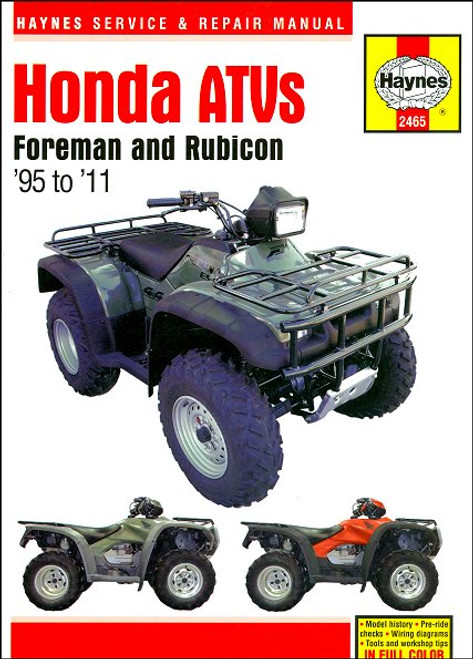This repair and service manual by Chilton covers U.S. and Canadian models of 2001-2011 Honda Civic and 2002-2011 Honda CR-V crossover vehicles. When it comes time to work on one of these popular vehicles, be sure you have the instructions and specifications you'll need to get the jobs done effectively and efficiently. You'll find what you need in this guide. Chilton has been a trusted source of service and repair manuals for many years, and there's a reason for that. They're good! NOTE: Does NOT include information specific to CNG or hybrid models. This Honda Civic 2001-2011, Honda CR-V Repair Manual 2002-2011 by Chilton is a great book to have by your side, whether you're doing simple maintenance jobs such as oil changes, replacing the spark plugs, etc., to more advanced tasks, such as replacing brake pads, troubleshooting electrical issues and more. But a Chilton manual does not stop there. These books allow advanced do-it-yourselfers to perform more complex tasks, such as rebuilding the car's engine. And having the manual as a reference is equivalent to having an experienced professional mechanic looking over your shoulder giving you tips and pointers on what to do next. You/ll love the step-by-step instructions, as well as the visual aids which accompany them.
Book Excerpt: Honda Civic 2001-2011, Honda CR-V Repair Manual 2002-2011 TUNE-UP GENERAL INFORMATION
DRIVEAXLES: FRONT: REMOVAL
Subject: 2001, 2002, 2003, 2004, 2005, 2006, 2007, 2008, 2009, 2010, 2011 Honda Civic, CR-V service, maintenance, repair. ISBN-10: 162092305X| ISBN-13: 9781620923054| Chilton 30203
Book Excerpt: Honda Civic 2001-2011, Honda CR-V Repair Manual 2002-2011 TUNE-UP GENERAL INFORMATION
The term tune-up is used in this manual to represent a combination of individual operations rather than one specific procedure. If, from the time the vehicle is new, the routine maintenance schedule is followed closely and frequent checks are made of fluid levels and high wear items, as suggested throughout this manual, the engine will be kept in relatively good running condition and the need for additional work will be minimized. More likely than not, however, there will be times when the engine is running poorly due to lack of regular maintenance. This is even more likely if a used vehicle, which has not received regular and frequent maintenance checks, is purchased. In such cases, an engine tune-up will be needed outside of the regular routine maintenance intervals. The first step in any tune-up or diagnostic procedure to help correct a poor running engine is a cylinder compression check. A compression check (see Chapter 2C) will help determine the condition of internal engine components and should be used as a guide for tune-up and repair procedures. If, for instance, a compression check indicates serious internal engine wear, a conventional tune-up will not improve the performance of the engine and would be a waste of time and money. Because of its importance, the compression check should be done by someone with the right equipment and the knowledge to use it properly.
DRIVEAXLES: FRONT: REMOVAL
Refer to illustrations 10.2, 10.3, 10.6a and 10.6b
- Loosen the front wheel lug nuts, raise the vehicle and support it securely on jackstands. Remove the wheel.
- Unstake the driveaxle/hub nut with a punch or chisel (see illustration).
- Loosen the driveaxle/hub nut with a large socket and breaker bar (see illustration), then remove the driveaxle/hub nut from the axle and discard it.
- Separate the lower control arm from the steering knuckle (see Chapter 10).
- Swing the knuckle/hub assembly out (away from the vehicle) until the end of the driveaxle is free of hub. Note: If the driveaxle splines stick in the hub, tap on the end of the driveaxle with a plastic hammer. Support the outer end of the driveaxle with a piece of wire to avoid unnecessary strain on the inner CV joint.
- Pry the inner CV joint out of the transaxle (or, on models so equipped, the intermediate shaft) using a large screwdriver or prybar (see illustrations).
- Support the CV joints and carefully remove the driveaxle from the vehicle. INSTALLATION Refer to illustrations 10.8a and 10.8b
- Pry the old spring clip from the inner end of the driveaxle (or, on models so equipped, the outer end of the intermediate shaft) and install a new one (see illustrations). (continued)?
Subject: 2001, 2002, 2003, 2004, 2005, 2006, 2007, 2008, 2009, 2010, 2011 Honda Civic, CR-V service, maintenance, repair. ISBN-10: 162092305X| ISBN-13: 9781620923054| Chilton 30203
TABLE of CONTENTS:
Introduction: About this manual | Introduction | Vehicle identification numbers | Maintenance techniques, tools and working facilities | Buying parts | Jacking and towing | Booster battery (jump) starting | Conversion factors | Automotive chemicals and lubricants | Safety first! | Troubleshooting
- Tune-up and routine maintenance
- Single overhead camshaft (SOHC) 4-cylinder EFI engines
- Double overhead camshaft (DOHC) 4-cylinder EFI engines
- General engine overhaul procedures
- Cooling, heating and air-conditioning systems
- Fuel and exhaust systems
- Engine electrical systems
- Emissions control systems
- 5-speed manual transaxle
- 4-speed automatic transaxle
- Transfer case (4WD CR-V only)
- CVT (Continuously Variable Transaxle)
- Clutch and driveline
- Brakes, ABS
- Suspension and steering systems
- Body
- Chassis electrical system
- Wiring diagrams











